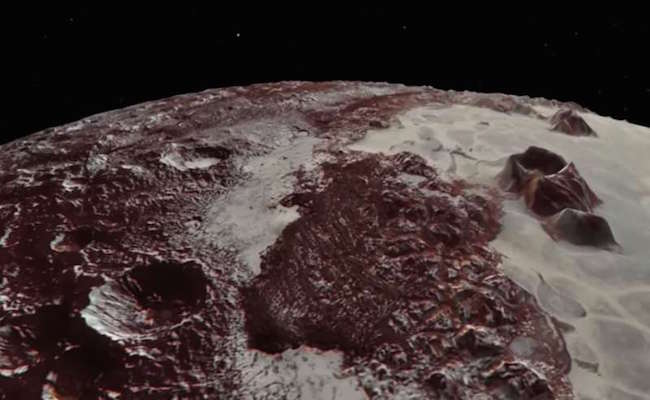Naming Surface Features on Pluto

When referring to surface areas on a celestial body scientists like to have names to refer to. Recently, the IAU officially named 14 areas on the surface of Pluto. Read on to learn more about the names they chose.
The International Astronomical Union approved the name of several geological features on the surface of Pluto. The IAU is the international astronomical organization that brings together more than 10,000 professional astronomers from almost 100 countries. Therefore, its mission is to promote and safeguard the science of astronomy in all its aspects through international cooperation. As a result, the IAU also serves as the internationally recognized authority for assigning designations to celestial bodies and the surface features on them. Founded in 1919, the IAU is the world’s largest professional body for astronomers.
New Horizon
NASA’s New Horizons team proposed the names to the IAU following the first reconnaissance of Pluto and its moons by the New Horizons spacecraft. They invited the public to make suggestions as well, allowing the whole world to participate in the naming. They wanted references for regions, mountain ranges, plains, valleys, and craters. The names pay homage to underworld mythology, pioneering space missions, historic pioneers, and scientists associated with Pluto.
“We’re very excited to approve names recognizing people of significance to Pluto and the pursuit of exploration as well as the mythology of the underworld. These names highlight the importance of pushing the frontiers of discovery,” said Rita Schulz, chair of the IAU Working Group for Planetary System Nomenclature.

Historic Explorers
Tenzing Montes and Hillary Montes -mountain ranges honoring Tenzing Norgay (1914-1986) and Sir Edmund Hillary (1919-2008). Respectfully, the Indian/Nepali Sherpa, and New Zealand mountaineer, who were the first to reach the summit of Mount Everest and return safely.
Al-Idrisi Montes honors Ash-Sharif al-Idrisi (1100-1165/66), a noted Arab mapmaker and geographer. His landmark work of medieval geography sometimes translates as “The Pleasure of Him Who Longs to Cross the Horizons.”
Scientists and Engineers
Tombaugh Regio honors Clyde Tombaugh (1906-1997), the U.S. astronomer who discovered Pluto in 1930 from Lowell Observatory in Arizona.
Burney crater honors Venetia Burney (1918-2009), who as an 11-year-old schoolgirl suggested the name “Pluto” for Clyde Tombaugh’s newly discovered planet. Consequently, her interests later led her to teach mathematics and economics.
Elliot crater recognizes James Elliot (1943-2011), an MIT researcher who pioneered the use of stellar occultations to study the Solar System. Therefore leading to discoveries such as the rings of Uranus and the first detection of Pluto’s thin atmosphere.
Space Missions and Spacecraft
Sputnik Planitia – a large plain named after Sputnik 1, the first space satellite, launched by the Soviet Union in 1957.
Hayabusa Terra – a large land mass saluting the Japanese spacecraft and mission (2003-2010) that returned the first asteroid sample.
Voyager Terra honors the pair of NASA spacecraft, launched in 1977, that performed the first “grand tour” of all four giant planets. The Voyager spacecraft now probe the boundary between the Sun and interstellar space.
Underworld Travelers
Djanggawul Fossae defines a network of long, narrow depressions named for the Djanggawuls. Three ancestral beings in indigenous Australian mythology who traveled between the island of the dead and Australia. They created the landscape and filled it with vegetation.
Sleipnir Fossa -named for the powerful, eight-legged horse of Norse mythology that carried the god Odin into the underworld.
Virgil Fossae honors Virgil, one of the greatest Roman poets and Dante’s fictional guide through hell and purgatory in the Divine Comedy.
Adlivun Cavus – a deep depression named for Adlivun, the underworld in Inuit mythology.
Tartarus Dorsa – a ridge named for Tartarus, the deepest, darkest pit of the underworld in Greek mythology.
Next, the IAU will have to approve the suggestions for Pluto’s moon and other surface features. It will be exciting to see what gets named and whom it will be named after.
